OffRoad Xtreme: Restoring Humanity’s Faith In Cats With MagnaFlow
If you’ve been on the internet over the past week or so, you’ve no doubt heard of (or worse, seen) the ungodly terror that is the Cats trailer. Anthropomorphic animals used to be charming, like in Disney movies Robin Hood, or even in Who Framed Roger Rabbit? But these ones strike fear in many a man’s soul.
But not all cats are horrifying. Some cats are necessary, in fact, if you live in California like yours truly. The reason I bring this up is because not too long ago, the catalytic converters on my 2001 Ford Explorer went kaputt and needed looking after. The resulting blockage prevented gases from escaping efficiently, and practically left my SUV in limp mode, unable to go past 40mph. My first thought was it had to be the transmission, since it seemed to get stuck in 2nd gear.
A mechanic set me straight (ripping out the broken guts of the faulty cat) and told me the OEM replacement route would set me back a good $2,000-3,000. That would essentially total my car. But on the flipside, having my daily driver/off-road 4×4 out of compliance with the law? In the words of Daryl Hall, no can do.
I’ve enjoyed driving my Explorer, and I wasn’t ready to consider it totaled just yet. Thankfully, the exhaust experts at MagnaFlow were just a hop and a skip away, and graciously offered to take a look at the cats and see what was going on. I drove to their headquarters in Oceanside, California to take them up on the offer.
Overview:
The manufacturing side of MagnaFlow’s facility was located near its office building, just across the street. I met up with Richard Waitas, a longtime figure of MagnaFlow and currently, its Senior Manager and Spokesman. Richard’s technical background and product development expertise helped me understand a lot of what was going on as it was going on.
“What we’re doing today is replacing catalytic converters on a California-emissions-compliant vehicle,” said Waitas. “So we’ll do a search by year, make and model, and then look up the engine family number, or EFN. Then we’ll verify the tube size and install the catalytic converters.”
On the 2001 Explorer with the 4.0-liter V6, Ford had the good sense to put not one, not two, but four cats in the exhaust – two parallel units branching from the exhaust manifolds, and two in tandem just after those. As I learned from Waitas, doing the replacement would involve more than just bolts and penetrant; the cats would need to be cut off, and new ones welded on, all while retaining as much clearance as possible.
Diving Deeper Into Catalytic Converters

In talking with Waitas, I learned a great deal about not just my own vehicle, but catalytic converters in general, and how they are regulated in California. Interestingly enough, MagnaFlow is one of few companies listed by the California Air Resources Board (CARB) that produces 50-state-compliant catalytic converters.
“We are a California-operated business and we cover just about anything on wheels that needs cats,” said Waitas. “Our directive is to have a solution for any catalytic converter problem.”


Providing solutions means having converters that cover a wide range of EFNs. “The EFN is a number created by the manufacturer that groups similar powertrains which will be tested the to show compliance with EPA or CARB regulations. Factors such as GVWR (gross vehicle weight rating) and features like two- or four-wheel drive will affect engine load and the engine calibration, which in turn may require different emissions solutions. So for an Explorer like this with the 4.0-liter V6, the calibration is going to be different than what’s on a Ranger.”
The way a catalytic converter works is as an add-on to the exhaust system. “Since engines aren’t 100-percent efficient, there are waste gases that come out of the imperfect combustion,” explained Waitas. “The cat’s job is to take the harmful waste gases and convert them into less harmful waste gases. Unburnt fuel [a.k.a. hydrocarbons], oxides of nitrogen [NOx gases], and so on are all addressed by the catalytic converter.”
Using heat from the engine and passed through the exhaust, the cat heats up precious metals inside it. These include platinum, palladium, and rhodium. The washcoat, which contains the precious metals, also serves to store and release oxygen needed to complete the burn of hydrocarbons left unburnt during combustion. By the time the exhaust gases are coming out of the tailpipe, they’re rendered into less harmful substances such as water, nitrogen, carbon dioxide, and oxygen.
What Separates A “50-State” Converter From A “49-State” Converter?

One thing I’ve always pondered is how catalytic converters can be 50-state compliant or 49-state compliant (the odd one out being, you guessed it, California). Basically, it has to do with what the OEMs decide for the vehicle’s destination state, long before it ever arrives in the showroom. In my naivete, I believed that all vehicles coming from the OEM were 50-state legal, but Waitas made a good argument for why that wasn’t logical.
“California cars cost a lot more to produce when you look at the scale of costs,” said Waitas. “The difference between a federally compliant car and a California compliant car is about $200-300 per catalytic converter. Spread that out across tens of thousands of vehicles, and you can start to see why making cars 50-state legal just isn’t cost-effective for the OEM.”
In the future, Waitas said, the OEMs will start making their vehicles more uniformly, as more and more states are adopting stringent exhaust standards. But for the time being, it still makes more sense for different vehicles to have different exhaust standards.

What makes a California cat different from a federal cat? Hint: it’s what’s inside that counts.
So how does a California converter differ from a federal converter? “The standard is higher than federal,” said Waitas. “Specifically, it’s using more materials – more precious metals, more washcoat, a different formulation. There are number of reasons why California 50-state-compliant parts are more expensive than federal catalytic converters.”
Why Do Cats Fail?

For something that can be so expensive to fix and yet must be fixed to be legal in California, catalytic converters are bitter pills to swallow for many drivers in the Golden State, off-roaders or not. Sure, it’s unreasonable to think that cats from 2001 can be expected to perform for close to two decades and not fail, but still, I wondered – what makes cats go bad?
Waitas had an interesting response. “Cats, at least on paper, should never go bad,” commented Waitas. “One of the main reasons they go bad is from wear and tear. Engine wear, along with engine sensor failures, can contribute to premature catalytic converter failure.”
“For example, if a MAF or O2 sensor degrades in performance or fails, the engine will incorrectly interpret the sensor readings and compensate for conditions that don’t actually exist,” Waitas continued. “This can create rich or lean run conditions which can result in overtemp conditions, damaging or even melting down the substrate and impeding exhaust flow.”

Another common engine related issue that can cause catalytic converter related problems is contamination. When the engine suffers from a blown head gasket or excessive wear on valve guides or piston rings, oil or coolant can seep in, obstruct the flow path, and even coat the substrate. Once the substrate is coated, the precious metals are prevented from interacting with the harmful gases. Also, as an off-roader, if I get hung up on rocks or obstacles, such a mishap can also break the substrate..
Replacing Cats On The Explorer

Now that I had a better understanding of the ins and outs of catalytic converters, I was ready to watch the MagnaFlow technicians set about replacing them on my Explorer. The techs started by lifting the vehicle and undoing the sensors, and then the bolts on the rear-most cats. Thankfully, the bolts didn’t shear, and everything came off properly.
On the cats mounted on either exhaust manifold, the techs applied penetrant to the bolts. They used extensions to reach the bolts tucked up in the engine bay and once again, luck was on their side, as none of the bolts sheared. Once the O2 sensors were unplugged, the assembly was finagled out of the undercarriage, and that was it for the old factory cats.




Clockwise: mocking up the passenger-side cat; the tac-welded front cats; the O2 sensor bung is welded onto the tubing; the system reaches completion as the flanges are bolted together.
Next, the technicians had to figure out how to place the cats in an orderly fashion. They used spare exhaust tubing and bent it to get the correct angle coming down from the exhaust manifolds, and welded on flanges to get them to bolt up properly. It was impressive to watch them figure out the pathing for the tubing, all while avoiding trouble areas.
Once the geometry was figured out, the techs took the new cat-equipped exhaust system to get fitted for O2 sensor bungs. With the marker marks on where to place them, it was easy for the guys to make the hole cut-out and weld in the bungs. Once that was all done, all that remained was bolting the pieces together at the flanges, and the Explorer was good to go.

Now it’s time to get back out there and explore in confidence!
In the time since getting this repair done, the exhaust has been just peachy – I haven’t had any ETCs flare up on my dashboard, and the free-breathing exhaust system isn’t affecting the transmission anymore. Suffice it to say, my Explorer is back to normal and that makes me a very happy camper.
I’d like to say a hearty thank you to MagnaFlow for their help and expertise in restoring my Explorer. And if you have a daily driver/off-roader that you want to keep compliant as the years go on, I recommend checking out MagnaFlow’s website and Facebook page to see what’s right for your vehicle.
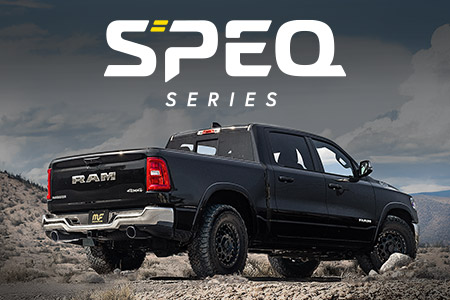
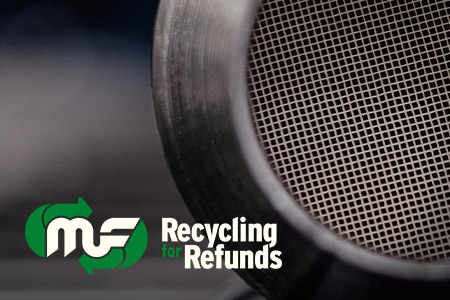
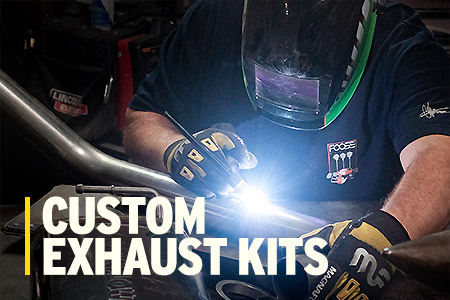
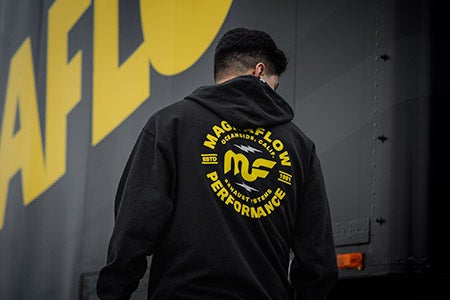
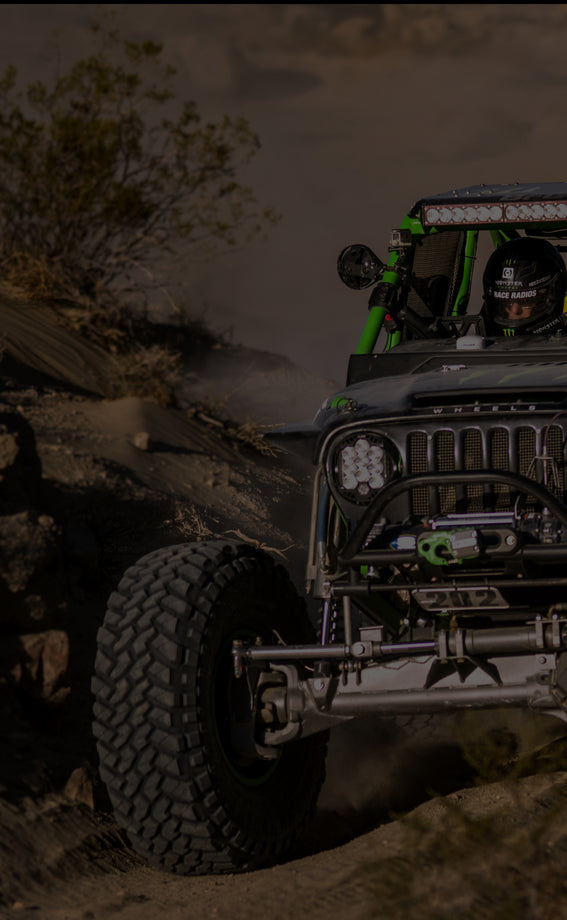


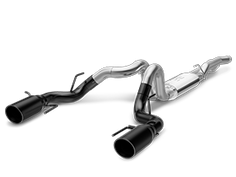
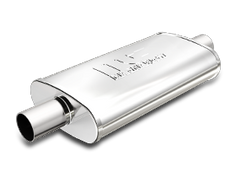
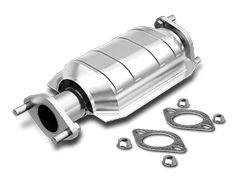
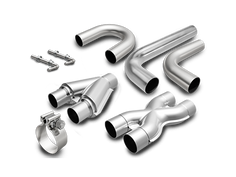
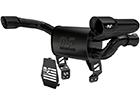





Comments